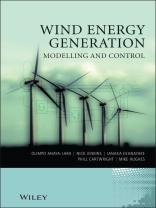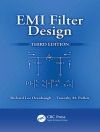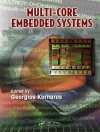WIND ENERGY GENERATION
WIND ENERGY GENERATION
MODELLING AND CONTROL
With increasing concern over climate change and the security of energy supplies, wind power is emerging as an important source of electrical energy throughout the world.
Modern wind turbines use advanced power electronics to provide efficient generator control and to ensure compatible operation with the power system. Wind Energy Generation describes the fundamental principles and modelling of the electrical generator and power electronic systems used in large wind turbines. It also discusses how they interact with the power system and the influence of wind turbines on power system operation and stability.
Key features:
* Includes a comprehensive account of power electronic equipment used in wind turbines and for their grid connection.
* Describes enabling technologies which facilitate the connection of large-scale onshore and offshore wind farms.
* Provides detailed modelling and control of wind turbine systems.
* Shows a number of simulations and case studies which explain the dynamic interaction between wind power and conventional generation.
Inhaltsverzeichnis
About the Authors.
Preface.
Acronyms and Symbols.
1 Electricity Generation from Wind Energy.
1.1 Wind Farms.
1.2 Wind Energy-generating Systems.
1.3 Wind Generators Compared with Conventional Power Plant.
1.4 Grid Code Regulations for the Integration of Wind Generation.
References.
2 Power Electronics for Wind Turbines.
2.1 Soft-starter for FSIG Wind Turbines.
2.2 Voltage Source Converters (VSCs).
2.3 Application of VSCs for Variable-speed Systems.
References.
3 Modelling of Synchronous Generators.
3.1 Synchronous Generator Construction.
3.2 The Air-gap Magnetic Field of the Synchronous Generator.
3.3 Coil Representation of the Synchronous Generator.
3.4 Generator Equations in the dq Frame.
3.5 Steady-state Operation.
3.6 Synchronous Generator with Damper Windings.
3.7 Non-reduced Order Model.
3.8 Reduced-order Model.
3.9 Control of Large Synchronous Generators.
References.
4 Fixed-speed Induction Generator (FSIG)-based Wind Turbines.
4.1 Induction Machine Construction.
4.2 Steady-state Characteristics.
4.3 FSIG Configurations for Wind Generation.
4.4 Induction Machine Modelling.
4.5 Dynamic Performance of FSIG Wind Turbines.
References.
5 Doubly Fed Induction Generator (DFIG)-based Wind Turbines.
5.1 Typical DFIG Configuration.
5.2 Steady-state Characteristics.
5.3 Control for Optimum Wind Power Extraction.
5.4 Control Strategies for a DFIG.
5.5 Dynamic Performance Assessment.
References.
6 Fully Rated Converter-based (FRC) Wind Turbines.
6.1 FRC Synchronous Generator-based (FRC-SG) Wind Turbine.
6.2 FRC Induction Generator-based (FRC-IG) Wind Turbine.
References.
7 Influence of Rotor Dynamics on Wind Turbine Operation.
7.1 Blade Bending Dynamics.
7.2 Derivation of Three-mass Model.
7.3 Effective Two-mass Model.
7.4 Assessment of FSIG and DFIG Wind Turbine Performance.
Acknowledgement.
References.
8 Influence of Wind Farms on Network Dynamic Performance.
8.1 Dynamic Stability and its Assessment.
8.2 Dynamic Characteristics of Synchronous Generation.
8.3 A Synchronizing Power and Damping Power Model of a Synchronous Generator.
8.4 Influence of Automatic Voltage Regulator on Damping.
8.5 Influence on Damping of Generator Operating Conditions.
8.6 Influence of Turbine Governor on Generator Operation.
8.7 Transient Stability.
8.8 Voltage Stability.
8.9 Generic Test Network.
8.10 Influence of Generation Type on Network Dynamic Stability.
8.11 Dynamic Interaction of Wind Farms with the Network.
8.12 Influence of Wind Generation on Network Transient Performance.
References.
9 Power Systems Stabilizers and Network Damping Capability of Wind Farms.
9.1 A Power System Stabilizer for a Synchronous Generator.
9.2 A Power System Stabilizer for a DFIG.
9.3 A Power System Stabilizer for an FRC Wind Farm.
References.
10 The Integration of Wind Farms into the Power System.
10.1 Reactive Power Compensation.
10.2 HVAC Connections.
10.3 HVDC Connections.
10.4 Example of the Design of a Submarine Network.
Acknowledgement.
References.
11 Wind Turbine Control for System Contingencies.
11.1 Contribution of Wind Generation to Frequency Regulation.
11.2 Fault Ride-through (FRT).
References.
Appendix A: State-Space Concepts and Models.
Appendix B: Introduction to Eigenvalues and Eigenvectors.
Appendix C: Linearization of State Equations.
Appendix D: Generic Network Model Parameters.
Index.
Über den Autor
OLIMPO ANAYA-LARA, University Of Strathclyde, Glasgow, UK
NICK JENKINS, Cardiff University. UK
JANAKA EKANAYAKE, Cardiff University, UK
PHILL CARTWRIGHT, Rolls-Royce plc. UK
MIKE HUGHES, Consultant and Imperial College London, UK












